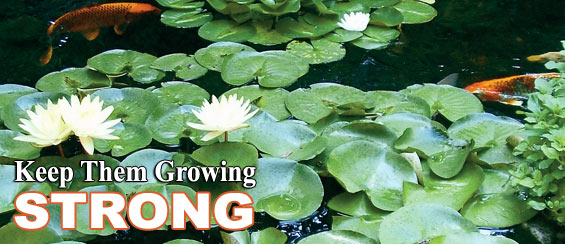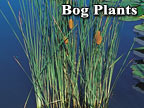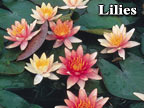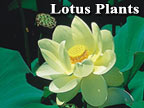
Days are growing longer. Your pond is about to come back to life. Now is the best time to prepare your aquatic plants for a beautiful spring.
Most aquatic plants grow aggressively and throughout last summer and fall, your plants may have grown beyond the limits of their containers. Overgrown plants will gradually decline, and may eventually choke themselves to death. Repotting plants is easy and can be quite rewarding. By providing your plants room to grow, they will absorb more food from the natural nutrients in the pond, and the fertilizers you provide. They will also grow lush and reward you with more blooms.
The best time to repot pond plants and minimize shock is early spring, before their explosion of new growth. Over winter, your plants have been submerged deep in your pond, or cared for indoors. Before returning them to their summer positions, take the time to inspect them. Make sure each plant has room to grow. If the plant's roots have become too crowded in its container, or grown far out of drain holes, it's time to divide.
Start with the right tools
Repotting is not difficult, but can be messy. Before you begin, you will want to gather some basic potting tools, a garden hose and bucket,
gloves, and, if your pond is large or deep,
waders.
 |
|
Planting baskets - Have on hand at least as many new empty baskets as you have plants in your pond. Some plants may not need to be divided, but others may need to be split up into three or four baskets. |
 |
|
Fertilizer - Now is a good time to add fertilizer tablets to all of your plants. Depending on the size of your plants and following the manufacturer's recommendations, you will likely need one tablet per gallon of soil. We recommend that you add plant food tablets to each pot monthly, spring through fall. Nitrate and phosphate-free liquid supplements can also be used to stimulate and feed plants. |
 |
|
Pond or aquatic planting media - Clay-based aquatic plant media will work best for most aquatic plants. They are easy to work with, don't stick to your hands, and help your plants retain nutrients. |
 |
|
Cutting tools - Standard garden tools will work with your aquatic plants. You will find a hand trowel and pruning shears especially handy. |
 |
|
Pond gloves - A must-have if you need to reach deep into cold water. These long PVC gloves keep your arms and hands dry. |
 |
|
Pond waders - The air may be warm, but your pond water may be under 50°F. If you need to move about in your pond in spring or fall, waders are indispensable. |
Give your plants the individualized attention they deserve
 Take the plant gently out of its container and rinse it with a hose. Look for divisions between individual plant stalks and its root system. Pull the divisions apart by hand, or cut them apart with sharp pruning shears or a long, sharp knife. Place a base of planting media in the planting basket until the crown - the part of the plant that should be at "ground" or surface level - rests about an inch below the edge of the basket. Add fertilizer tablets, spaced as recommended, and then fill potting media around the plant up to an inch of the crown. Fill the last inch with lava rock or small river rock up to the crown. This will keep loose planting media from floating up as you lower the plant onto the planting shelf.
Take the plant gently out of its container and rinse it with a hose. Look for divisions between individual plant stalks and its root system. Pull the divisions apart by hand, or cut them apart with sharp pruning shears or a long, sharp knife. Place a base of planting media in the planting basket until the crown - the part of the plant that should be at "ground" or surface level - rests about an inch below the edge of the basket. Add fertilizer tablets, spaced as recommended, and then fill potting media around the plant up to an inch of the crown. Fill the last inch with lava rock or small river rock up to the crown. This will keep loose planting media from floating up as you lower the plant onto the planting shelf.
Some plants, such as cattails, have a thick growth of roots that it is very difficult to locate sections. For these, just choose small groups of stalks and cut the roots to separate them. Because cattails grow aggressively, you might prefer to place them in a closed pot without holes to keep their roots from taking over in your pond.
 Gently lift the lily from its container and rinse. You will see one large piece, a central taproot. Likely attached to this taproot you will also see secondary roots or "knobs" with their own developing roots. If the knobs can be easily broken free from the core by hand, they are ready for individual planting. However, if the knob cannot easily be broken away, leave it in place. When repotting your "baby" lilies, put about 3-5 inches of planting media in the bottom of the basket, then place the shoot so its roots face the bottom and the pad shoots face the top. Surround the shoot with the recommended number of fertilizer tablets. Gently hold the roots down, leaving the shoots up, and add planting media around the edges until the tip and shoots remain slightly exposed. Add a layer of small rocks to hold the planting media in place when set into your pond.
Gently lift the lily from its container and rinse. You will see one large piece, a central taproot. Likely attached to this taproot you will also see secondary roots or "knobs" with their own developing roots. If the knobs can be easily broken free from the core by hand, they are ready for individual planting. However, if the knob cannot easily be broken away, leave it in place. When repotting your "baby" lilies, put about 3-5 inches of planting media in the bottom of the basket, then place the shoot so its roots face the bottom and the pad shoots face the top. Surround the shoot with the recommended number of fertilizer tablets. Gently hold the roots down, leaving the shoots up, and add planting media around the edges until the tip and shoots remain slightly exposed. Add a layer of small rocks to hold the planting media in place when set into your pond.
 Known for its aggressive growth, lotus may need to be repotted more often than other pond plants. Because the new growth of lotus is very sensitive, it must be handled gently to avoid damaging new shoots. It is more difficult to determine from surface observation when lotus needs repotting. If you have had the plant more than one year, or you observed that it didn't bloom well last season, it is likely ready to be repotted. Gently pour out as much dirt as you can out of the container. Do not pull on the plant! Then gently rinse the soil away. You should find white tubers with hairy roots on the ends.
Known for its aggressive growth, lotus may need to be repotted more often than other pond plants. Because the new growth of lotus is very sensitive, it must be handled gently to avoid damaging new shoots. It is more difficult to determine from surface observation when lotus needs repotting. If you have had the plant more than one year, or you observed that it didn't bloom well last season, it is likely ready to be repotted. Gently pour out as much dirt as you can out of the container. Do not pull on the plant! Then gently rinse the soil away. You should find white tubers with hairy roots on the ends.
Healthy tubers will be white to gray in color, and very firm. Others may be in decay. If the tuber is dark or soft, remove it or the part of it that is. Leaving it adjacent to a healthy tuber can make the healthy one rot. Select a sturdy, solid round container, at least 18 inches or more across, and 6-8 inches deep. Place a 3-inch layer of aquatic plant soil in the bottom of the container. Gently hold the lotus in place as you add planting media to about one inch over the top of the tuber. Protect the sensitive shoots from damage. Place a medium size rock over the center of the tuber, small enough to avoid touching the new growth. Add additional small rocks to keep the soil in place, carefully avoiding the new shoots. | 





